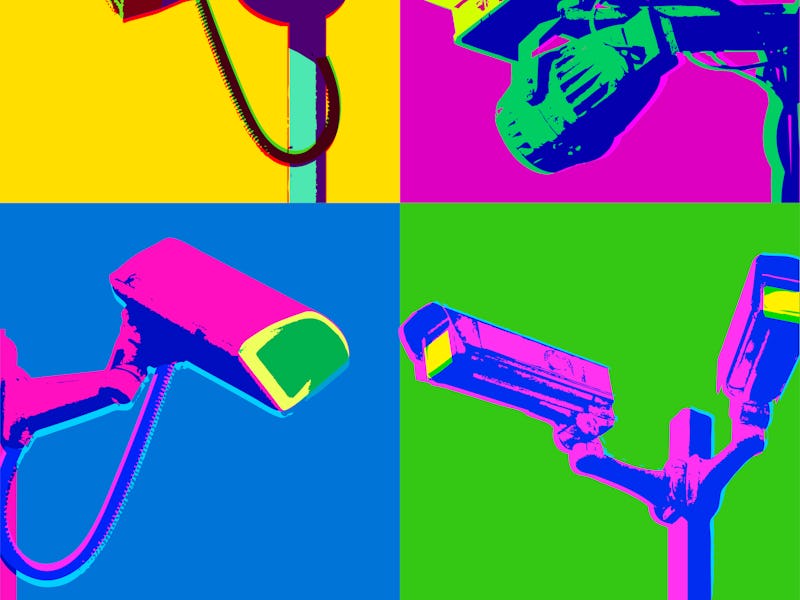This high-tech camera may help protect our identities — here's how it works
Plus: Making indoor lighting work better.

Ever scrolled through Instagram and spotted yourself in the background of a friend’s photo looking a bit rough? A new AI-designed camera could fix the problem for you before it even happens — though it’s more intended as a solution for surveillance cameras than your pal’s smartphone. Digital cameras are everywhere, and they see you a lot, thanks to facial recognition tech, body motion tracking, and medical imaging.
These cameras pick up myriad details daily, resulting in massive troves of data and raising serious privacy concerns. To try and streamline what some of these lenses see, a group of researchers from the University of California, Los Angeles, has created cameras that can be taught to snap images of important objects while simultaneously erasing others from the shot.
What’s new — People typically train computers to identify sensitive content in images (like license plate numbers or human faces) and then conceal the info by blurring it out, encrypting it, or using another concealing technique. But the raw image will show it all — and that’s a security risk. This is especially true if your images live on a cloud-based server, where it’s relatively easy for hackers to snatch private info.
To protect our data in the nick of time, UCLA bioengineer Aydogan Ozcan and his team envisioned a smart camera that can focus on what matters, as they report in a new study. For example, the camera could spot someone walking through a security line and at the same time obscure uninvolved onlookers’ faces.
This diffractive camera design, which features 3D-printed layers designed by AI, can target certain objects while erasing other ones from the final image.
The camera — The new smart camera consists of up to seven 3D-printed layers. Ozcan’s team used deep learning to map out thousands of tiny features that allow these 3D-printed surfaces to bend light to transmit some objects and erase others from a final collected image. The device rids unwanted sights by transforming them into patterns that look like random noise, as seen above.
To demonstrate its efficacy, the scientists trained the camera on a group of handwritten digits — 2, 2, 5, and 9 — lit up by terahertz waves. They aimed to capture only the number 2 and successfully blocked out the numbers five and nine from their final image. They tested the camera under various lighting conditions and found it works well in various environments.
The device is mostly intended for surveillance cameras, Ozcan tells Inverse. “But one can also envision their use at home,” he adds. “Imagine you would like to only track your pets or an elderly person at home for remote monitoring.”
Their invention could pave the way for encryption cameras that only let people with a decryption key access the images it takes.
Handily, the new smart camera is relatively energy-efficient compared to the older obscuring techniques, all of which need computers to process the image.
On the horizon ...
While indoor lighting can throw off our biological clocks, researchers may have found a way to replicate the sun’s rays.
Indoor lighting makes us sick. It can throw off our circadian rhythms and cause people to develop chronic inflammation, which is linked to other conditions like cardiovascular disease, neurodegeneration, and even cancer. Since Americans spend around 90 percent of their time indoors on average, that’s a huge problem.
A new study offers a possible solution: To mimic the daily sunlight exposure that helps our biological clocks run smoothly, we could use artificial lights incorporating quantum dots, which are synthetic nano-sized crystals that can transport electrons.
Unlike a standard LED that produces white light through three colors — red, green, and blue — qunatum-dot-LEDs broaden the palette to produce a more dynamic lighting system that resembles daylight’s ever-changing colors. Quantum dots are already used to brighten LCD displays and offer a precise range of colors, but they could eventually bring the outdoors inside our homes and offices, too.
The system can’t precisely recreate sunlight — at least, not yet. For one, it’s difficult for artificial lights to compete with the far greater luminous intensity (or lux) outside.
But the study could ensure a bright future for those of us who are confined indoors for most of the day.
“This research opens the way for a wide variety of new human-responsive lighting environments,” Gehan Amaratunga, a professor of engineering at Cambridge University who also co-led the research, said in a press release.
Read the full story to find out more.
Here’s what else we’re reading...
- The climate crisis risks around a third of our food due to pollinator decline. Crops, including apples, melons, broccoli, and almonds, are at particular risk, according to CNN.
- Scientists in Italy developed a robot bartender. Mashable serves up the story.
- This hydrogel that outperforms cartilage could transform knee implants. New Atlas has the details.
- Russia unveiled a model of its proposed space station. This news comes shortly after the country announced it will end cooperation on the ISS, according to The Guardian.
- The U.S. could experience a new extreme heat belt by 2053. NBC News dives in.